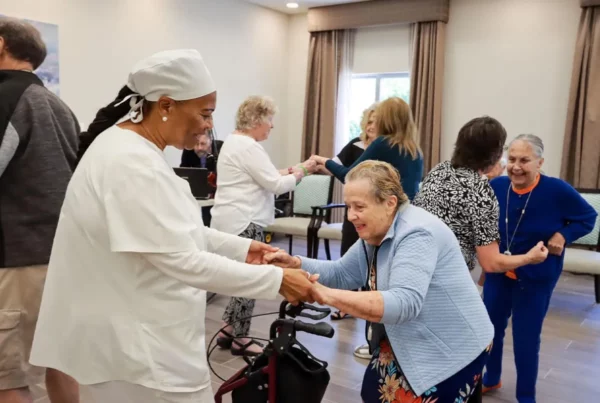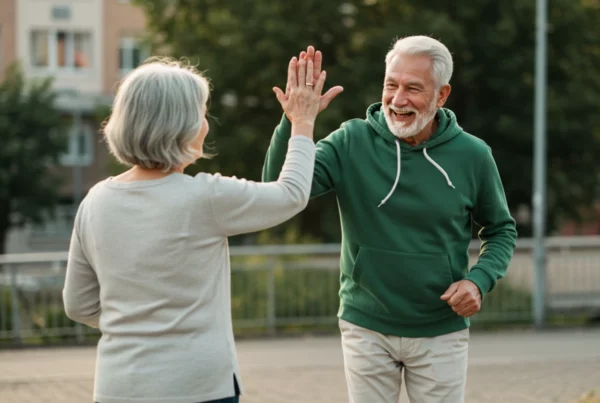As people age, maintaining their independence becomes increasingly essential. A key factor in determining care levels is an older adult’s ability to perform daily tasks. This relates to what we refer to as crucial self-care tasks. This brings us to the core question that frames our discussion: What are the activities of daily living? They play a vital role in senior care. This article will explore their importance in assessing seniors’ needs and how an individual’s performance impacts autonomy. Furthermore, we’ll provide practical tips for support. We will also highlight their significance in senior care services.
What are the activities of daily living: understanding their importance
What are activities of daily living? ADLs are fundamental tasks. Individuals must perform them daily. This maintains their health and well-being. These activities range from personal care to functional mobility and nutrition. For older adults, their ability in these fundamental daily functions is key. It is an indicator of their independence and overall quality of life.
Some of the most common examples relevant to understanding what are the activities of daily living include:
- Bathing and grooming: Maintaining personal hygiene is essential for both health and self-esteem. Seniors who are unable to bathe or groom themselves may require assistance with these tasks.
- Dressing: The ability to dress independently is a significant marker of personal autonomy.
- Eating: Preparing and consuming meals is not just necessary for survival. It is also a way for individuals to feel independent. They can feel engaged in daily life.
- Mobility: Moving around is a crucial aspect of maintaining independence. This includes walking or transferring from one location to another. An example is moving from a bed to a chair.
- Toileting: Using the restroom independently is another critical ADL that reflects autonomy and independence.
When assessing an individual’s capabilities, healthcare providers and families use these basic tasks to evaluate a senior’s level of independence. A senior may be unable to perform these activities independently. The assessment helps determine the appropriate level of care and support. This can range from minimal assistance to full-time caregiving. It always considers the scope of what are the activities of daily living.
How do activities of daily living affect older adults?
The activities of daily living are crucial for maintaining independence. They also ensure the overall well-being of older adults. These tasks are foundational to physical health, mental well-being, and personal dignity. Seniors unable to perform ADLs independently often experience a decline. This affects their self-esteem and sense of autonomy. It can lead to feelings of depression and isolation.
Healthcare providers and families assess an individual’s ability. They evaluate the performance of activities of daily living (ADLs). This determines the type of care needed. For example, a senior may require assistance with basic tasks. These include bathing, dressing, or eating. This may indicate the need for assisted living services. The goal of senior care is to preserve independence to a considerable extent. This is especially true about what are the activities of daily living. It also involves providing necessary assistance. This enables individuals to maintain their dignity and comfort. Especially about what are the activities of daily living.
Senior support services are crucial. They enable older adults to manage their activities of daily living (ADLs). These services can range from in-home caregivers assisting with specific tasks to comprehensive care management. Examples include bathing or meal preparation. They can also extend full-time assisted living arrangements. These provide more extensive support. The level of care needed depends on the amount of assistance the individual needs. This is if the need for help is minimal. Therefore, this helps relate to understanding and performing what are the activities of daily living. However, for individuals who require more intensive care, a transition to a facility specializing in assisted living may be necessary.
Tips to support older adults in their Independence
Even as seniors age and face challenges with their daily activities, there are practical ways to support them in maintaining their independence. With the right tools, modifications, and support systems, many seniors can continue to perform their daily activities (ADLs) with minimal assistance. Below are some strategies to help support seniors in maintaining their independence:
1. Environmental changes: easing what are the activities of daily living
Maintaining mobility is key to preserving independence in older adults. Encouraging regular physical activity helps seniors improve their balance, strength, and coordination, all of which are essential for performing activities of daily living (ADLs) such as walking and transferring from one place to another. Low-impact exercises, such as walking, swimming, or stretching, can help seniors maintain their mobility and reduce their risk of falls.
Engaging seniors in appropriate physical activities not only supports their independence but also has positive effects on their mental health. For instance, a simple walk can boost mood, stimulate the mind, and reduce stress. Having the ability to move freely and without pain enhances a senior’s sense of autonomy, making them more likely to complete daily activities independently.
2. Encouraging exercise and Mobility
Simple modifications in the home environment can make a significant difference in a senior’s ability to perform ADLs. For instance, installing grab bars in the bathroom, using raised toilet seats, or adding non-slip mats can make it easier and safer for seniors to use the restroom or bathe independently. These changes reduce the risk of falls and increase confidence when performing those tasks that are part of what are the activities of daily living.
Similarly, organizing the home in a way that encourages independence is also beneficial. This could include placing essential items within easy reach or ensuring that frequently used objects are accessible without requiring bending, stretching, or climbing. For instance, a senior’s favorite items should be stored in easily accessible places to avoid the need for assistance, thus promoting a sense of control.
3. Supporting nutrition in activities of daily living
One of the key elements for successfully navigating daily life is eating, a core component when considering what are the activities of daily living. Proper nutrition is essential for seniors to maintain energy levels, prevent illness, and promote overall well-being. Family members or caregivers can help by preparing nutritious meals, ensuring seniors have easy access to healthy snacks, or offering assistance if the senior has difficulty feeding themselves. In cases where seniors are unable to prepare their meals, senior support services can provide meal delivery services or assist with grocery shopping.
Additionally, encouraging seniors to maintain a balanced diet can help them continue managing activities of daily living (ADLs) independently. Foods rich in essential vitamins and minerals promote bone strength, cognitive function, and overall vitality, enabling seniors to engage more fully in daily life.
4. Socialization, mental health, and their link to what are the activities of daily living
Social isolation is a significant concern for seniors, particularly those who struggle with their activities of daily living. Encouraging seniors to engage in social activities or community events can help them maintain their mental health and well-being. Many assisted living facilities offer socialization opportunities, including group activities, outings, and events, which encourage seniors to engage with others and help prevent loneliness and depression.
The emotional impact of isolation can also affect a senior’s ability to perform activities of daily living (ADLs). When seniors feel isolated, they may lose motivation and confidence in their ability to care for themselves. Socializing and being part of a community help seniors stay mentally sharp and emotionally engaged, which ultimately benefits their physical health and independence.
5. Using technology for activities of daily living
Advances in technology have made it easier for seniors to maintain their independence while receiving the support they need. Devices like personal emergency response systems (PERS) enable seniors to call for help in the event of an emergency. This can provide peace of mind to both the senior and their family members, especially when questions arise about what are the activities of daily living. Additionally, smart home technology, such as voice-activated assistants, can assist seniors with daily tasks, including turning on lights, adjusting the thermostat, or requesting assistance.
Another form of assistive technology that helps seniors is mobility aids, such as walkers, wheelchairs, and scooters. These tools enable seniors to move around more easily and with greater confidence. Additionally, technology that helps with vision and hearing impairments, such as amplified phones or smart glasses, can aid in performing activities of daily living, further promoting autonomy in the context of what are the activities of daily living.
What are the activities of daily living: family and caregiver roles
Families and healthcare providers play a crucial role in helping seniors maintain their daily activities. When seniors require assistance with activities of daily living (ADLs), families are often the first line of support. They can help by providing care directly or by arranging for professional assistance through home care agencies or assisted living communities. This especially happens when the demands of what are the activities of daily living become too great for informal care alone.
Healthcare providers assess the level of care required for seniors by evaluating their ability to perform activities of daily living (ADLs). For example, a doctor or nurse may conduct a functional assessment. Indeed, this helps determine which specific functions a senior is having difficulty with when considering the complete picture of what are the activities of daily living. This assessment helps guide care decisions and ensures that seniors receive the appropriate level of assistance based on their individual needs.
ADLs and specialized care needs
In some cases, seniors may require more specialized care to help them manage specific activities of daily living. For example, seniors with dementia or Alzheimer’s disease may need specialized memory care to assist with tasks such as dressing, bathing, and eating. These individuals often need more support in managing their ADLs because of cognitive impairments that affect their ability to complete these tasks independently. Undoubtedly, functions that are fundamental to understanding what are the activities of daily living.
Specialized care services are designed to meet the unique needs of seniors with cognitive impairments or chronic health conditions. These services may include tailored support for activities of daily living, such as personal care, medication management, and mobility assistance, ensuring that seniors receive the care they need to maintain their dignity and overall well-being when facing difficulties with the components that constitute what are the activities of daily living.
Seaside, a comprehensive assisted living solution
Family caregivers are often at the forefront of assisting seniors with their daily activities. These caregivers are essential for providing emotional, physical, and logistical support to their loved ones. However, the physical and emotional demands placed on caregivers can sometimes lead to burnout. In some situations, caregivers may not be able to offer the level of assistance required for all aspects involved in what are the activities of daily living. This may prompt the need for more formal care arrangements.
Supporting senior independence: the Seaside Hallandale Beach approach
Understanding the full scope of daily self-care is essential for assessing the care needs of seniors and supporting their independence. The ability to perform these functions plays a critical role in maintaining the physical, emotional, and mental health of older adults, a concept thoroughly explored when we ask, what are the activities of daily living? By encouraging seniors to stay active, modifying their environments, providing nutrition support, and fostering socialization, families can help seniors maintain their autonomy and improve their quality of life..
If your loved one requires additional support to manage their daily activities, Seaside Hallandale Beach offers comprehensive assisted living services tailored to meet the unique needs of each individual. With specialized care options and a focus on promoting independence, Seaside provides a safe and supportive environment where seniors can thrive.
Explore our assisted living services and discover how we can help your loved one maintain their dignity and independence. With specialized care options and a focus on promoting independence, Seaside provides a safe and supportive environment where seniors can thrive, particularly when they need help with aspects that define what are the activities of daily living.
Seaside Hallandale Beach is committed to enhancing the lives of seniors through compassionate care, expert staff, and a nurturing environment. Let us help you navigate the challenges of daily living activities and provide the support your loved one needs to live a fulfilling and independent life.
References
- Berzosa, T. (2025, February 14th). Activities of daily living (ADLs). Discapnet Fundación ONCE.
- Cafagna, G., Aranco, N., Ibarrarán, P., Oliveri, M. L., Medellín, N., y Stampini, M. (2019). Aging with care: Attention to dependency in Latin America and the Caribbean. Banco Interamericano de Desarrollo.
- Faster Capital. (n.d.). Promotion Of Independence And Activities Of Daily Living.
- Frutos, M. (2021). Assessment of independence in basic activities of daily living (BADLs) and instrumental activities of daily living (IADLs) of people over 65 years of age affiliated with OSPE-Hospital Privado health coverage during the social, preventive, and mandatory isolation due to COVID-19. Universidad Católica de Córdoba.
- Kaplan, D. (2023). Care of the older person by their family. Manual MSD.
- National Institute on Aging (NIA). (2023, September 15th). What do we know about how to age healthily?
- National Institute on Aging (NIA). (2024, November 14th). Loneliness and social isolation: Suggestions for maintaining social connections.
- Organización Mundial de la Salud (OMS). (2024, June 26th). Physical activity.
- Pantoja, J. y Ardila, G. (2024). Promoting independence, well-being, and autonomy in activities of daily living.







